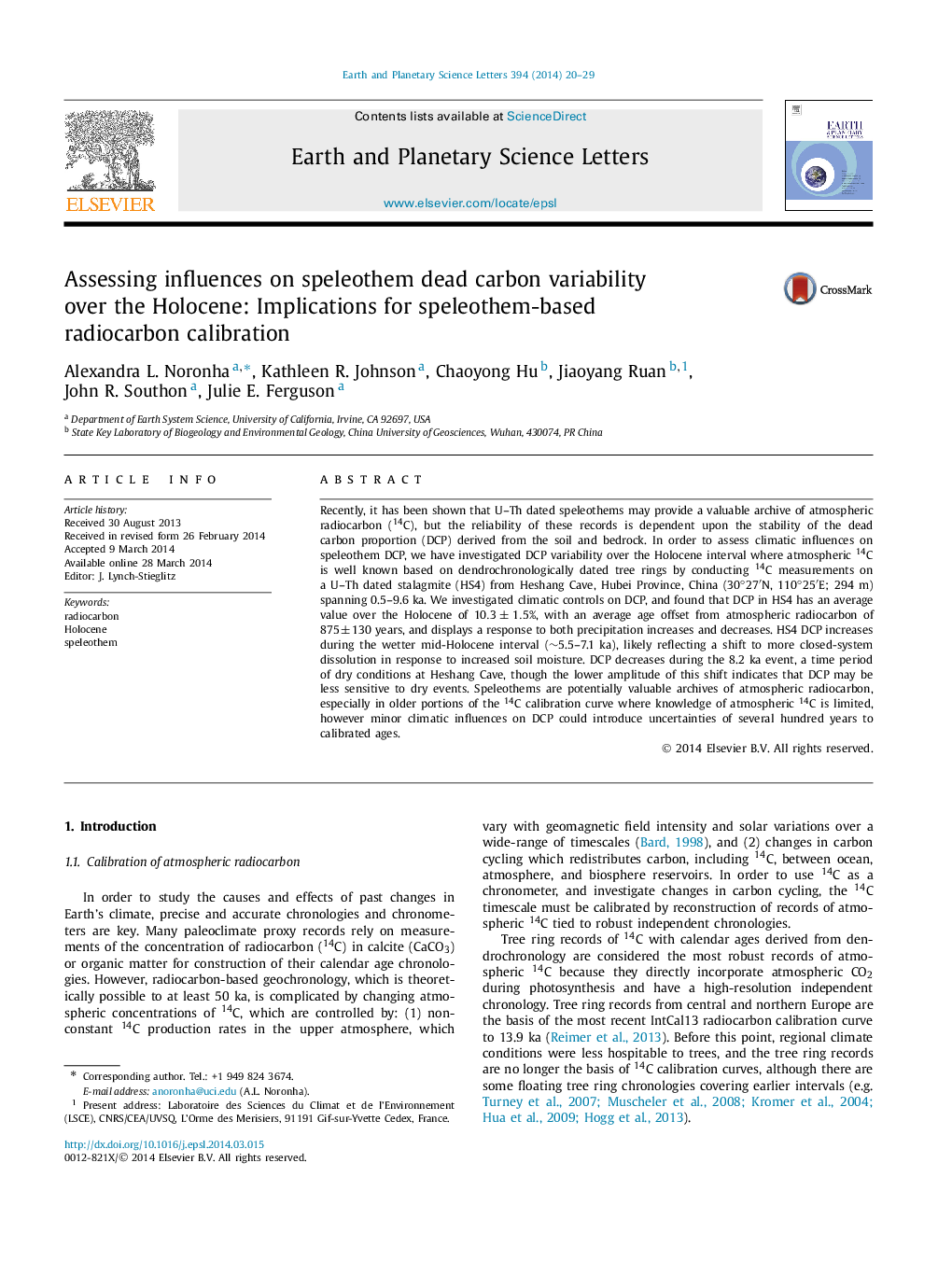| Article ID | Journal | Published Year | Pages | File Type |
|---|---|---|---|---|
| 6429386 | Earth and Planetary Science Letters | 2014 | 10 Pages |
â¢Stalagmite-based Holocene record of atmospheric 14C from Heshang Cave, China.â¢Dead carbon incorporation increases during the warmer and wetter mid-Holocene.â¢Cold, dry, 8.2 ka event does not show proportional decrease in dead carbon.
Recently, it has been shown that U-Th dated speleothems may provide a valuable archive of atmospheric radiocarbon (14C), but the reliability of these records is dependent upon the stability of the dead carbon proportion (DCP) derived from the soil and bedrock. In order to assess climatic influences on speleothem DCP, we have investigated DCP variability over the Holocene interval where atmospheric 14C is well known based on dendrochronologically dated tree rings by conducting 14C measurements on a U-Th dated stalagmite (HS4) from Heshang Cave, Hubei Province, China (30°27â²N, 110°25â²E; 294 m) spanning 0.5-9.6 ka. We investigated climatic controls on DCP, and found that DCP in HS4 has an average value over the Holocene of 10.3±1.5%, with an average age offset from atmospheric radiocarbon of 875±130 years, and displays a response to both precipitation increases and decreases. HS4 DCP increases during the wetter mid-Holocene interval (â¼5.5-7.1 ka), likely reflecting a shift to more closed-system dissolution in response to increased soil moisture. DCP decreases during the 8.2 ka event, a time period of dry conditions at Heshang Cave, though the lower amplitude of this shift indicates that DCP may be less sensitive to dry events. Speleothems are potentially valuable archives of atmospheric radiocarbon, especially in older portions of the 14C calibration curve where knowledge of atmospheric 14C is limited, however minor climatic influences on DCP could introduce uncertainties of several hundred years to calibrated ages.
